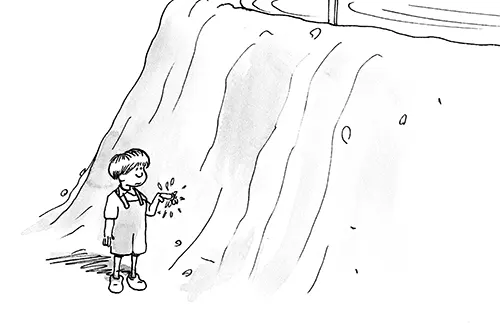
We’ve all heard about the story of the boy who put his finger in a dam to stop a leak. In this episode, Adam shares an interesting case study on how they were able to use their proven waterproofing processes to stop a leaky dam in their local municipality.
Narrator: It’s time once again for the “Crack Man Podcast” hosted by A1 Foundation Crack Repair. I’m Darren Kincaid here with the Crack Daddy himself, Adam Tracy. Adam and The Crack Man Rich have over 30 years’ experience in the construction industry. Rich as over two5 years as the president and founder of A1 Foundation Crack Repair. This podcast provides expert basement waterproofing, concrete repair, and preventative maintenance tips for homeowners and businesses. A1 Foundation’s valuable insight will help avert a disastrous flood within the basement, health problems associated with water infiltration, and protect your biggest investment….your home. The topic of today’s podcast: The municipality had a damn problem that A1 fixed.
Narrator: So, Adam, we've all heard about the story of the boy who put his finger in a dam to stop a leak. Was that you? Did you stop a leak in a dam with your finger?
Adam: We did stop the leak. However, it involved no fingers being buried in concrete to do so. We have some nice means and technology to do it instead of the old school cartoon of the kid sticking his finger in. And if we remember that cartoon, it's always that he puts it in one finger, you know, one finger in, it comes out in all different places. But the reality is on this dam infrastructure, it was relatively straightforward. There were a couple of cracks in the concrete, and they had been leaking for years.
They had continuously tried to repair and patch it with traditional means like being in hydraulic cement. And even some of the local maintenance team got some flex seal and they sprayed that on there. But lo and behold, it didn't hold back any water, so they brought us in as an expert. The learning lesson behind this is the methods that we used on the dam that, again, for municipal drinking supply is the same process that we'd be using on your home.
I often get this phone call from people where they've been told whether it was by a family member, an industry expert, quote, unquote, or their own research that, again, they got to dig it out from the outside. The only way to do this is to dig this out from the outside. Otherwise, you're just wasting your time. And the reality is that it’s just not true. In this case, obviously, we're a dam. We're 20 to 30 feet below the water line, and we can't dig outside, and there's always water present against that concrete.
Where people are always concerned, you know, getting water away from the foundation is always the best thing to do to start. Make sure your gutters are extended away, making sure your sloping isn't kind of pitched back towards the house. You do want the water to run away from the foundation. But when that can't be done or the cost implications are just far too much, doing this process of injecting into the foundation is by far and away a proven method, and it can be done all over the place. So in this case, it was 14 feet high above ground that we're able to deal with and then went down even lower than that. The depth of the water was tens of feet.
I think it was, like, 25 feet or so. And so that water pressure was always sitting against that concrete there. Over time, it just did some damage to the internal rebar structure and opened a little bit of a crack there. And so rather than going to a multimillion-dollar renovation project, they wanted to extend the life of this dam kind of indefinitely. And the engineers of the project, the corps of engineers, decided that, hey. This is the right way to do it, which just happened to line up the same process that we use on every foundation here in New England.
We're able to drill into that concrete, inject in a closed cell waterproofing material that basically bound the concrete back together. It chases the rebar around the concrete structure and fully waterproofs that are 18 inches of concrete all the way through the concrete dam there.
It's a good cautionary tale that if somebody's telling you, you must dig this out, this is the only way to do it. Everything else is a waste of time. The truth is that's just wrong. We can do this from the inside, minimal disruption to your home and to your yard, and we're in and out in a couple hours typically to take care of these things. It's not a several day project where you're going to have to regrade, re-seed, and call DigSafe and get all these crazy things in order just to repair a simple foundation crack. So just use caution when you're hearing from local experts or family experts or even just the Internet that you must do it this way because the reality is it's not true.
Narrator: Well, thanks, Adam, for this interesting case study on how you were able to use your proven waterproofing processes to stop a leaky dam for your local municipality.
Narrator: If you have a basement water problem and think you need a professional, or, if you’d like more information on foundation crack repair and basement waterproofing topics, please visit A1FoundationCrackRepair.com or call (866) 929-3171. Or you can email info@a1foundationcrackrepair.com. Thanks for listening and keep that basement dry.

